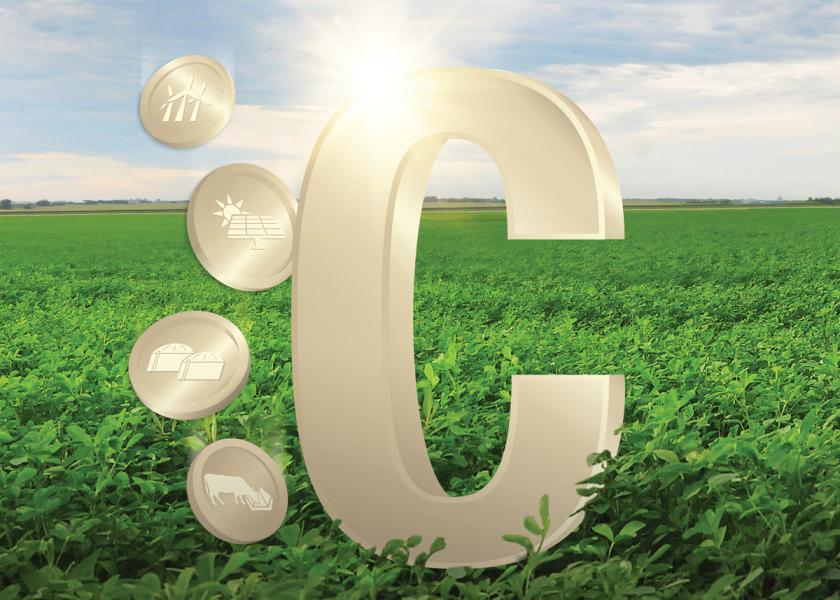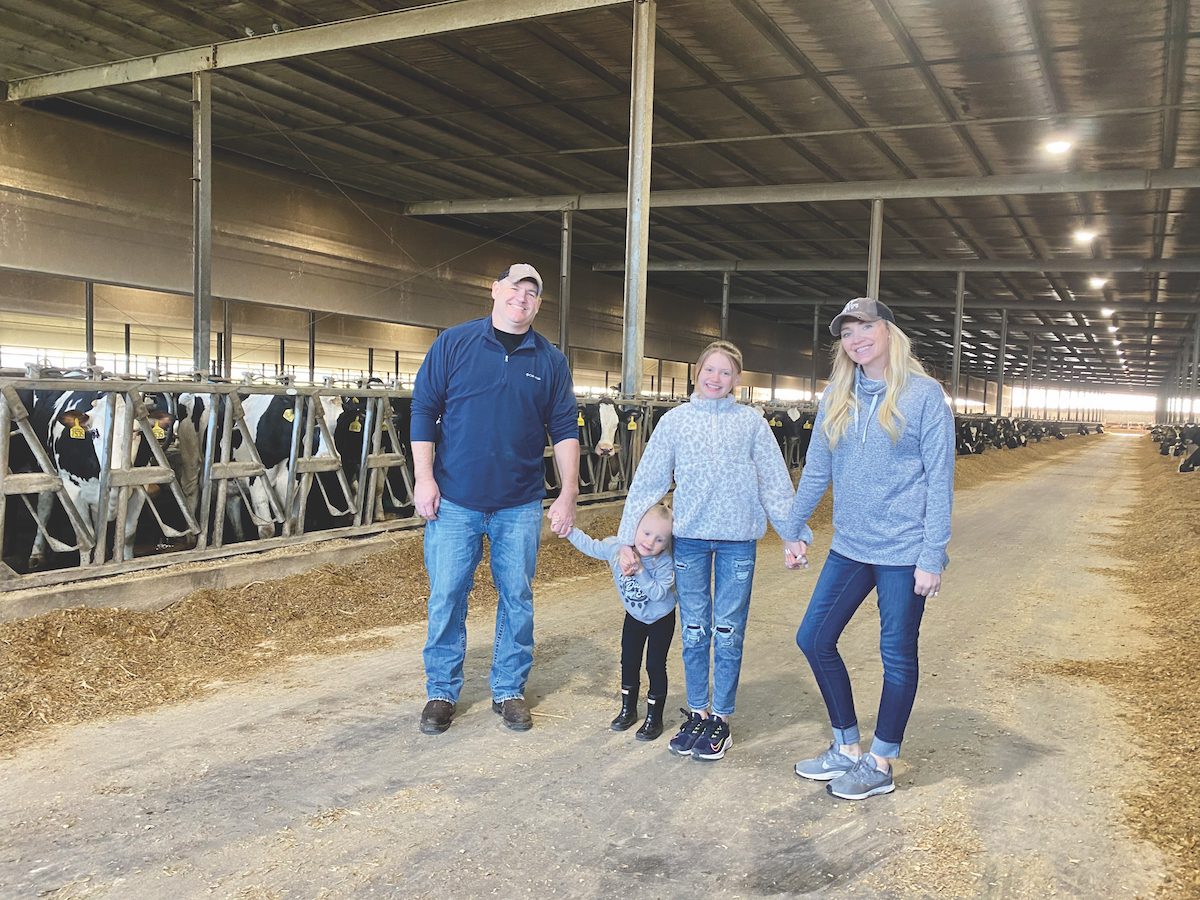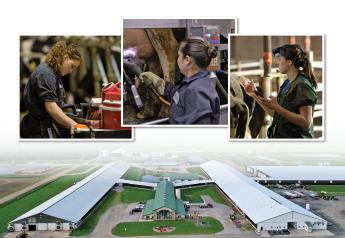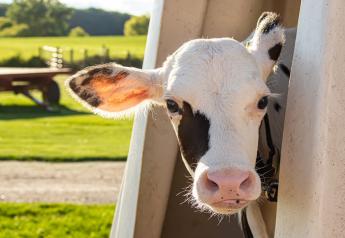Turning Sustainability into Profitability with Carbon

Sustainability – It’s a 14-letter word with about 1,400 different definitions. At its most basic form, however, sustainability boils down to balancing the needs of the present with the needs of the future. And for today’s dairy producers, that means being able to turn a profit while also better serving the environment.
Practicing environmental sustainability is nothing new for dairy farmers, while participating in carbon programs is. Despite these programs being relatively new and complex to understand, farmers have several compelling reasons to be involved in them, including environmental responsibility and economic incentives to regulatory compliance, enhanced reputation and long-term viability.
Though the reason to consider joining a carbon credit program can be enticing, taking the time to research how these programs work, what the process involves and how much they pay can cause some farmers to sit out on the sidelines according to Heather Gieseke, a leader of Pinion’s sustainability practice.
“Recent data shows farmer enrollment in [carbon] programs is less than 5%,” Gieseke notes. “Many are skeptical about climate change or don’t understand how carbon programs work. Others wonder if there’s really any value in them, and some are concerned that carbon programs will become government-mandated, although the U.S. market today is voluntary.”
Despite these programs being somewhat complex to navigate, Gieseke encourages producers to not immediately rule these programs out. Instead, she spurs them on to explore what unique opportunities exist.
RNG: An Economic Opportunity
During the 2023 Milk Business Conference, Karen Scanlon, Executive Vice President of Environmental Stewardship for Dairy Management Inc., hosted a Climate Smart Agriculture panel to discuss the different carbon program avenues dairy farmers can take to not only become more sustainable but to also serve as an additional profit source.
When it comes to actively participating in a carbon program, Evan Barton is no stranger to the game. In 2021, Barton, who milks 3,000 cows just 40 miles east of Columbus, began conversations with Clean Energy Fuels, a natural gas distribution company in Newport Beach, Calif., about installing a methane digester on his operation.
Within a few months, Barton decided to partner with Clean Energy and began construction on a methane digester to help supply renewable natural gas (RNG) to a nationwide pipeline. Not only does this help a farm improve its sustainability efforts, but it also can generate additional income.
“We're taking the methane that's coming off of our manure lagoons and capturing it,” Barton says. “Then we'll turn it into natural gas that Amazon will use at a fueling station to power trucks. So, it will be a win on both sides. We will reduce our methane emissions, and at the same time, we will offset the emissions that would be coming from diesel trucks or gasoline vehicles delivering Amazon packages.”

According to Barton, the RNG that will be produced on his operation will take 50 large semi-trucks off of fossil fuels and replace it with sustainable fuel made from the manure on his farm. In turn, the renewable fuel from Barton’s digester will then equate to carbon credits, allowing him to generate additional revenue from his cattle.
“As it gets harder and harder to be profitable in the dairy industry, we could potentially make more money selling carbon than we make selling milk,” Barton adds.
Consultants Provide Additional Profit Avenues
While supplying RNG through a methane digester system has become one of the most popular methods for getting involved in a carbon program, the list does not stop there. According to Nicholas Goeser, Principal of Carbon A List, there are a variety of ways to participate.
One such avenue is through partnering with a carbon consulting firm, like Carbon A List, to identify low-hanging fruit opportunities.
“A lot of the focus for our program is helping farmers spot environmental factors on their farms in which they want to improve and then working to find them a partner to provide either private or federal dollars to help enable those decisions and encourage next steps,” Goeser says.
According to Goeser, environmental consultants work hard to stay up to date on relevant carbon credit developments, can provide technical assistance and help facilitate networking opportunities for farmers interested in sustainability initiatives. In addition, these professionals can provide personalized guidance, conduct carbon assessments and assist with program enrollment and implementation.
“We’re working hard to try and layout the best opportunities in front of farmers for their specific operations,” he adds.
Some of these opportunities include:
- Installing renewable energy systems such as solar panels, wind turbines or biomass digesters.
- Enhancing soil carbon sequestration through practices such as conservation tillage, cover cropping or rotational grazing.
- Feeding nutritional additives within the ration to help minimize methane production.
Teaming Up with Processors
Similar to consulting companies, many dairy cooperatives and processors are willing to help farmers find the right fit when it comes to carbon programs. According to Tim Trotter, CEO of Edge Dairy Cooperative,processors can play several important roles in helping producers participate in carbon programs and implement carbon reduction initiatives.
“At Edge Dairy Cooperative, we work to empower our farms to put forth strategies that help with local resource issues. As this has developed, we have found out from the brands that we deal with that there's a lot of interest in where our food comes from and what's happening on the farms. So, being able to share that sustainable story with the brands our farms sell to is a powerful message. And those brands are willing to potentially pay a premium for that sustainable data.”
Obtaining that data, however, is a key piece of the equation to have success within a carbon program. Whether it’s utilizing technology or having a third-party conduct an assessment, it’s important to have accurate information on hand.
“When you have a farm that's climate-smart, it is using all the great technologies available to document their proof. We want to help give farms a robust toolbox that they can use to deploy on their farms and take to the carbon market. Letting them use the tools they want to capture that data and then, year-over-year, document their progress, is an important piece to that puzzle,” Trotter adds.
Words of Advice
While carbon programs are an exciting venture that can provide economic incentives to become more sustainable, it is important to do your homework before diving all-in. Gieseke offers the following points to consider before agreeing to participate in a carbon program.
1. Does it seem too good to be true?
Carbon programs are not a get-rich-quick scheme. If a program is promising you the world and you have to do nothing in return, you should probably ask more questions or consider other options.
2. Is the organization requiring you to purchase something in order to participate or paying you in a credit to purchase something?
Just because it’s a trusted brand from which you’ve purchased crop inputs or services in the past doesn’t mean it’s qualified to deliver on a legitimate carbon project. Most claims that applying specific products will improve carbon sequestration are not backed by legitimate or peer-reviewed research that verifies creditable improvements.
3. Do you have enough information?
Ask some technical questions, even if you aren’t an expert. The salesperson’s responses should alert you right away if the program is legitimate and if they are truly knowledgeable in the carbon arena. Here are a few to consider:
- Are the credits issued through a registry?
- How are the credits verified?
- Who’s doing the verification?
- How are the credits issued, sold and accounted for?
- Who’s buying the credits? At what price?
- How much does this company keep versus how much you, the farmer, receive?
Barton, Trotter and Goeser concur with Gieseke’s advice, adding several other factors to consider:
Educate Yourself: Both Goeser and Gieseke recommend familiarizing yourself with the different carbon programs and opportunities available, including their objectives, eligibility criteria, and requirements for participation.
“Understanding the specific activities or practices that qualify for carbon credits can help you decide whether or not the opportunity is worth the investment,” Goeser adds. “When in doubt, reach out to a trusted advisor or consultant.”
Assess Your Farm's Carbon Footprint: Conducting a thorough assessment of your farm's carbon footprint to identify areas where emissions can be reduced or sequestered is another must, according to Trotter. “Knowing where you’re at today lets you see the progress you’ve made in the future,” he says.
Implementing a monitoring and documentation processes to track the implementation and effectiveness of carbon reduction activities on your farm will be crucial. Keep detailed records of relevant data, such as emissions measurements, carbon sequestration rates, and implementation costs to demonstrate compliance and eligibility for carbon credits.
Seek Guidance: Consult with agricultural experts, extension agents, or consultants with expertise in sustainable agriculture, carbon management, and carbon markets. They can provide valuable guidance, technical assistance and support in navigating the complexities of joining a carbon program.
“I didn't sign up to Clean Energy right away. I actually hired a consultant ,” Barton says. ”I think that was really important because I didn't know anything about it. And having him on my side from a negotiating standpoint was very valuable.
Stay Informed: If you're considering participating in regulatory carbon programs or compliance markets, stay informed about relevant regulations, emissions reporting requirements, and compliance obligations. Ensure that your farm meets any regulatory standards or certification requirements necessary to participate in these programs.
“I think the biggest thing that I would offer as advice is to make sure you don't sign up for the first deal when it comes your way and talk to your neighbors. More importantly, talk to your fellow dairy producers across the country. Because there's a lot of different deals out there. Some are good, some are not, and some are yet to be determined. But I think it's really important not to sign up for a bad deal and get locked in and miss a great opportunity,” Barton adds.
In today’s world, companies and consumers are hyper focused on sustainability. However, dairy farmers have been focused on sustainable practices since the beginning. Now, as the need to become more sustainable grows, farmers can capitalize on their efforts through the various carbon programs that are made available to them. By embracing sustainability and actively engaging in carbon reduction efforts, dairy farmers can play a crucial role in addressing climate change while securing the future of their industry.







